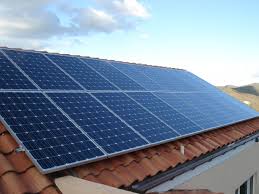Victorian energy regulator the Essential Services Commission has recommended that the minimum feed-in-tariff paid for surplus rooftop solar output fed back into the grid be cut to 5c/kWh from the current level of 6.2c/kWh in 2016.
The recommendation, included in a report released this week, suggest that the falling cost of wholesale electricity prices – coincidentally the result of reduced demand and increased renewable energy – justifies the cut.
This graph illustrates the findings of the ESC and how it got to its numbers.
The forecast average pool price is self explanatory. The value of PV is higher because of when the electricity is generated (in the middle of the day), and rooftop solar is credited with avoiding line losses (5 per cent of electricity generated from centralised plants never make it to the customer). And there is a small sum for avoided “market and ancillary fees”
The solar industry has long criticised pricing regulators in Australia of estimating only the avoided costs of rooftop solar and not crediting it with any benefits.
For intance, apart from avoided line losses, there is no credit for network benefits, or environmental benefits. The contrast with some US states, where pricing regulators put the “fair” solar tariff at close to the retail price, is striking.
The ESC itself says that – like other Australian regulators – it does not include “any savings in relation to the following types of costs when quantifying the FiT: network costs, hedging costs, green scheme costs and retailer costs.”









